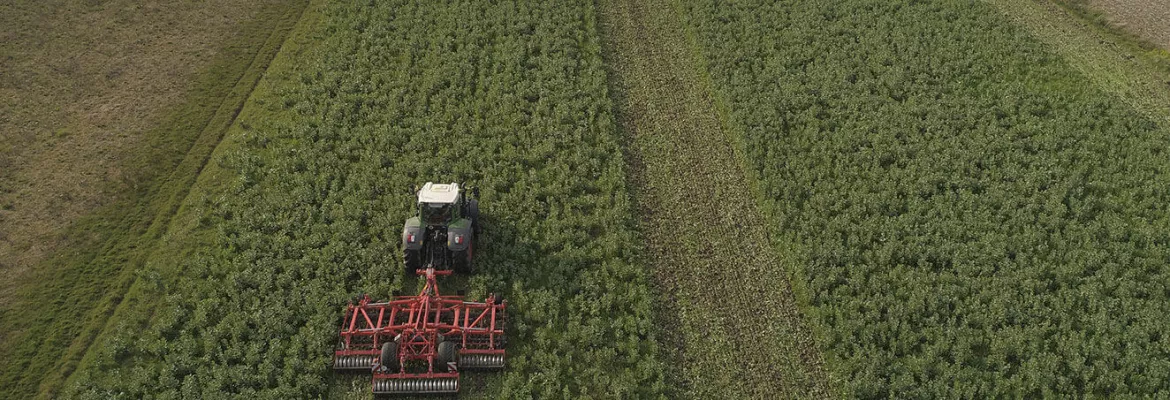
Stubble cultivation is a shallow or deeper tillage technique (1 to 15cm) carried out with a mechanical tool, the stubble cultivator, hitched to a tractor. The tool is mainly used by famers for managing and decomposing crop residues, straw, and habitats for pests such as slugs, as well as for weed control, improving soil structure, and preparing the seedbed. The machine can be configured with discs, tines, and/or shares. Many different synonymous terms exist for this equipment. It depends on the components that are fitted with, working depth, operating methods, and desired results.
Equipment for stubble cultivation: names of tools, similar terms, and synonyms
Agricultural machines are used for stubble cultivation after harvest or before seeding. The choice of machine will depend mainly on working depth requirements.
For shallow cultivation, between 1 and 5cm, the tools are:
- stubble harrows,
- power harrows/rotary tillers,
- vibro stubble cultivators,
- stubble cultivators with independent discs.
These machines are also useful for deeper work, along with cover-crop tools, cultivators with 2 rows of tines, and stubble cultivators with wide and flat shares.
The effects of different types of stubble cultivators
Stubble cultivation can cause the soil to crack in front of the working components. This can happen with all stubble cultivators. The operation can also cause sectioning if the implement has discs which are cutting components. Impact and friction between clods also produces a crumbling effect due to the clods crushing against each other. This is an effect produced by most stubble cultivators.
Lastly, displacing the soil:
- Sideways: This effect can be created with tine tools that bring up clods to the surface with the fine soil.
- Vertically: This is the result of tines on harrows, cultivators, and vibro-cultivators that cause the fine soil to move down to the bottom of the furrow.
The definition of stubble cultivation: desired effects
The structure of the soil and the seedbed
The aim of using a stubble cultivator is to break up the soil, i.e., non-worked land is cracked open. When there are still clods on the surface, the desired effect could be soil crumbling. This means reducing the size of clods to create fine soil. Soil loosening can be carried out when there are no more clods. On slaking soils, it can be useful to sort the clods from the fine soil. Bringing clods up to the surface can protect against slaking crusts. Lastly, to enhance soil / seed contact, the tamping effect of rollers is beneficial.

Managing residues and organic matter from the previous crop
There are two desired results:
- Burial: Mechanical operation consisting of burying stubble and inputs (fertilisers, plant-protection products).
- Mixing: The different elements are mixed into the layers of the soil uniformly.

The surface of the field
The aim may be to create an uneven surface to increase the contact area between the soil and the elements and enhance climatic effects. Indeed, in winter, clods can be broken up by the effect of the soil freezing/thawing, as well as through changes in terms of moisture and drying.
The desired effect may also simply be to level the field.
Source: https://www.arvalis.fr/editions/choisir-ses-outils-de-travail-du-sol
